16 Evidence-Based Health Benefits of Matcha Tea
Many have come across the term “Matcha Green Tea’ while skimming through a menu at their favorite restaurant or bar.
They would ask a waiter about it and the response they would often get is “It is a sort of green tea”.
After trying it out for the first time, people often want to get to know this tea a bit better.
Not only does it taste good, but it usually makes you feel better.
To begin with, green tea is much valued in the healthcare industry.
Like many other types of tea, it causes many health benefits.
However, what makes it different from other teas, is its broad span of benefits it brings for your health, from weight loss to better cardiovascular and heart functions (1, 2, 3, 4, 5).
Also, it is claimed that Matcha green tea has even healthier properties than its predecessor.
But this will be discussed later on.
As for the history of Matcha green tea, it dates back to the early 8th century when Zen monks from Japan took a revolutionary step at that time.
Although green tea has been used in China for more than 1,000 years, Matcha green tea was “invented” by the Japanese.
Namely, unlike the old traditional way of preparing tea by discarding the already boiled leaves, Zen monks drank the actual leaves.
Yet, they were powdered. Matcha literally means “powdered tea.”
They used it to remain alert, concentrated and calm during meditation.
The Far East peoples have been consuming this omnipotent elixir for over a millennium.
Why they have kept drinking it is undebatable – no tea has that many health benefits.
It’s no wonder it is rated one of the best drinks on the market today.
How is Matcha Different from Green Tea?
Despite the fact that both regular green and Matcha come from the Camellia sinensis plant, there are some differences between them.
These differences start with the process of growing the plant.
The first thing that makes them different is the pre-harvest period.
Matcha green tea bushes have to be covered from the direct sunlight for about 20-30 days before harvest.
The leaves need the shade to gain an increase in chlorophyll levels.
Because of this, the leaves turn to have a bit darker, vibrant shade of green.
As the levels of chlorophyll increase, so does the production of L-Theanine, an amino acid that is found in the tea plant and certain types of mushrooms.
Moreover, some types of tea, that is the ones that have the increased L-Theanine levels, have a tendency to both calm and stimulate at the same time.
After harvesting, workers remove the stems and veins from the leaves.
The leaves have to go through the process of deveining and destemming before becoming stone-ground.
Once the leaves have been processed, the powder resulting from this processed leaves is called Matcha.
When a person drinks tea, he also drinks water besides the tea nutrients.
In the case of Matcha, only the leaf powder is ingested, and this is why it has higher rates of caffeine and antioxidants.
One cup of Matcha tea generally contains about 35 mg of caffeine, which is slightly more compared to a cup of regular green tea.
What’s more, Matcha green tea can be served with various supplements, sweeteners, or milk.
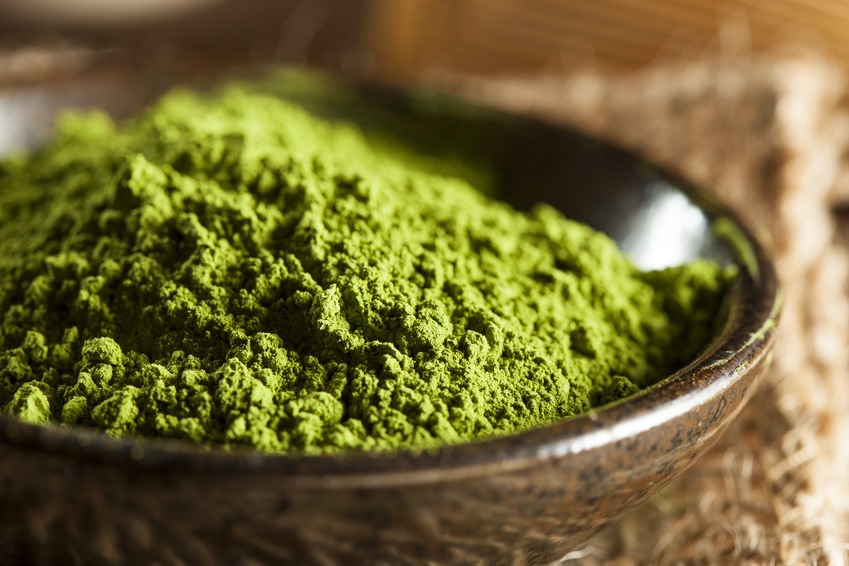
How to Prepare Matcha Green Tea
Unlike regular green tea, which is made from soaked leaves, Matcha green tea includes the ground leaves.
Matcha is usually prepared in two most common forms: Usucha and Koicha.
There is also a third way to prepare this tea, the standard way.
This standardized way requires regular Matcha tea.
It is usually mixed with 1 teaspoon of Matcha powder and 2 ounces of hot water.
This is the traditional Japanese way of preparing Matcha green tea.
Shashaku, a bamboo spoon, is used to measure the tea.
A Chawan, a heated tea bowl, is used as a tea container.
Speaking of Usucha and Koicha, these are two forms of preparing Matcha green tea.
Usucha means “thin tea,” and is known to be the most common preparation.
According to the tourists visiting Japan, every restaurant in Japan serves Usucha.
The thin tea uses about a half a teaspoon of Matcha, which is mixed with about 3 to 4 ounces of hot water.
Koicha, on the other hand, is “thick tea.”
Due to its thicker leaves, it is stronger and more potent.
When it comes to preparing Koicha, it requires less water but more Matcha powder compared to Usucha.
Hot water of about 70°C is added to the bowl, the tea is whisked with a bamboo whisk, known as chasen.
It has to be whisked until it becomes smooth and there is froth on top.
Also, Koicha needs no foam and a higher grade of Matcha, unlike Usucha, which is made from the second grade Matcha.
Even though they are both considered Matcha green tea, they are not to be interchanged and mistaken.
What makes them different is the quality, preparation, and use.
Koicha is thicker, thus of a higher quality.
The preparation is also different because different methods and tools are used.
Finally, Koicha is usually served during traditional tea ceremonies, whereas Usucha has the “everyday purpose”.
Here is a perfect demonstration and concise tutorial on preparing Matcha green tea:
Despite the thorough and detailed information about the Matcha preparation, everyone can make Matcha green tea at their home.
Everything they need is a cup, teaspoon, small whisk, and a little bit of Matcha powder.
Health Benefits of Matcha Green Tea
Green tea has been known to offer a variety of health benefits.
But if taking into consideration that Matcha green tea leaves are ingested, it goes without saying that this variety of green tea can only offer extra health benefits.
Being a more potent source of nutrients than steeped green tea, Matcha is widely known to be more concentrated in antioxidants.
Also, according to the research conducted on animals, it reduces the risk of kidney and liver damage, thus lowering the rates of blood sugar, triglyceride, and cholesterol (6).
It is also proven to be more effective compared to green tea for fighting bacteria, fungi, and viruses (7).
Here is the list of some health benefits of Matcha green tea.
Full of Antioxidants
Antioxidants are those powerful nutrients and enzymes that protect the body from the negative effects of UV radiation and free radicals.
It also protects skin cells and tissues, thus making you look younger.
Catechin is found in great amounts in Matcha.
There are different types of Catechin antioxidants, and the most important is to be found in Matcha.
It is epigallocatechin gallate (EGCG), which reduces inflammation, maintains the health of arteries and causes cell regeneration (8).
It is also proved that unprocessed tea leaves than the processed ones, or tea bags, that is (9).
And finally, according to one study, Matcha green tea contains up to 137 times more antioxidants compared to a regular green tea, and up to 3 times more antioxidants compared to high-quality teas (10).
Some of the most common sources of antioxidants are fresh fruits and vegetables.
But what many overlook is the power of Matcha because of antioxidants.
Reduces the Risk of Heart Diseases
Needless to say, heart disease is one of the top causes of death in the world.
The causes are many, thus the “risk factors” are high and everywhere (11).
In today’s world, people are bound to be exposed to them, yet they may reduce the risks significantly.
One of the ways to do so, is drinking Matcha green tea.
High cholesterol, LDL cholesterol, and triglycerides are known as “the heart attackers”.
In addition, what many diabetics are familiar with is blood sugar.
High blood sugar levels can also cause heart disease, but Matcha, once again, can fight them back if consumed on a regular basis (12, 13, 14).
LDL-cholesterol, also a major risk factor for heart disease, can be reduced by a regular consummation of Matcha (15, 16).
Studies have shown that drinking green tea reduces the risk of heart disease up to 31% (17, 18, 19, 20).
The main reason for this drastic risk reduction is antioxidants as well as plant compounds.
This is especially the case with Matcha, which contains even more of these two compared to regular green tea.
Causes Weight Loss
Like many other types of tea, green tea is also a great way to lose some weight.
Since it has been proven to be efficient in weight loss, many companies have included green tea in their weight loss supplements.
Due to the fact that green tea increases metabolism, on average your body will burn fat at an increased rate.
Thus, the increased metabolic rate means increased fat burning.
Human studies have shown that Matcha green tea is likely to burn more fat up to 17% (21, 22, 23, 24).
According to yet another study, exercising immediately after drinking green tea also increases the fat burning rates during a workout routine up to 25%.
What’s more, unlike many other diet tools on the market, this one has no negative side effects.
Nevertheless, you should keep in mind that these studies might not be as accurate.
In contrast, a recent study showed the effects of green tea on weight loss are insignificant and small, thus of no importance (25).
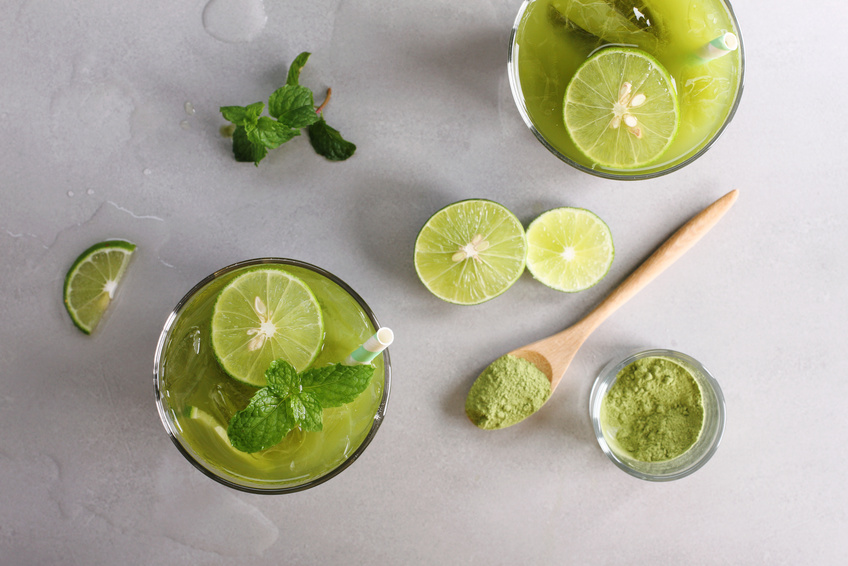
Relaxes Both the Body and Mind
It is no wonder why Japanese Zen Buddhists took Matcha as a means to relax and meditate and remaining alert at the same time.
This higher state of consciousness can be attributed to higher levels of L-theanine, which is much more present in Matcha than other types of green tea.
This amino acid is found in the Matcha leaves, and it causes an easier production of alpha waves in the brain.
These signals induce mental relaxation, reduce stress by fighting stress signals, and even lower blood pressure (26, 27, 28, 29).
Unlike many other “downers” that cause drowsiness such as coffee, it increases alertness and clarity of the mind.
L-theanine has an ability to modify the caffeine effects in the body.
Moreover, Matcha is reported to counterbalance the “nervous” effects of caffeine, thus inducing a more relaxed and milder mood (30).
L-theanine is also capable of inducing chemicals such as dopamine and serotonin, which stimulate an improvement in mood, concentration, and memory (31).
In addition to improving cognitive functions, powdered Matcha green tea is also capable of slowing down the decline of age-related cognitive functions.
Not only can it slow down the decline, but it can also improve brain function (32, 33, 34).
Fights Aging
As mentioned before, Matcha green tea is powerful for it is packed with antioxidants, which fight free radicals.
These free radicals are the main cause of damaging our cells and changing our DNA.
As a result, they cause accelerated aging.
Even though the science has become a powerful way of fighting many diseases, you can notice there are cases of early deaths even in the today’s world.
Drinking green tea proved to be of great help when it comes to prolonging life in a natural and healthy way.
Namely, in a study conducted on the Japanese adults, those who were drinking 5 or more cups per day significantly reduced the chance of dying during the period of 11 years (35).
Not only did it reduce the death rate from heart disease and stroke, but it also reduced the death rate of all causes.
Moreover, the percentages were higher for women than for men.
In yet another study conducted on the Japanese, the elderly people ages 65-84 years who consumed green tea were less likely to die over the 6-year period (36).
Taking all these into account, no wonder why many consider this tea a “superfood”.
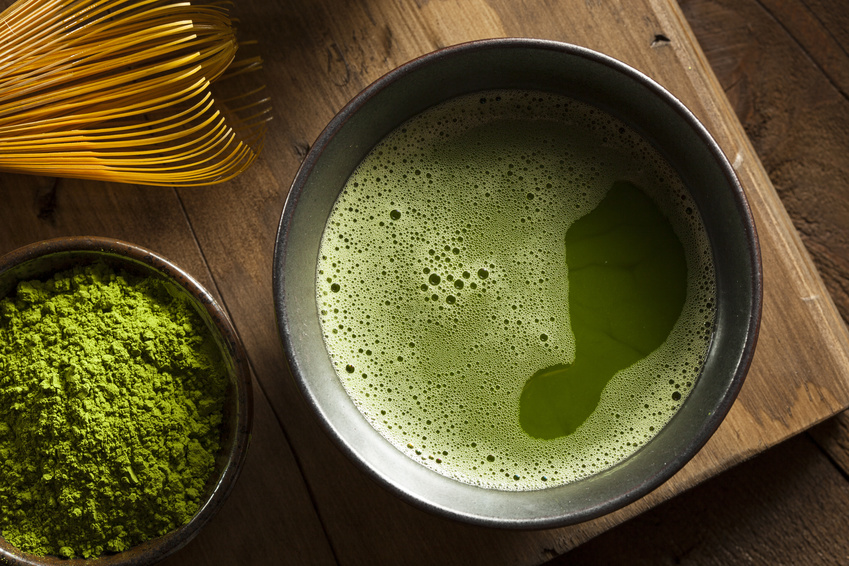
Prevents Tooth Decay
Many people have great problems with their tooth health.
Unhealthy gums, tooth loss, and bad breath are just some of the problems many people struggle with.
Besides these three previously mentioned tooth problems, green tea can fight and prevent many more.
First, green tea prevents cavity in your teeth.
When drinking green tea, your saliva is less acidic.
Second, green tea lowers the chances of dental plaque and controls bacteria.
Green tea is also capable of maintaining your gum health.Due to its anti-inflammatory powers, green tea is capable of controlling periodontal disease.
Cavities and unhealthy gums are prerequisites for bad teeth.
As a result, bad teeth lead to fewer teeth.
You may not be familiar with the fact, but teeth cancer is one of the potential health issues.
You may be susceptible to it, but drinking tea will absolutely lower the chances.
Antioxidants and other green tea properties protect teeth from cancerous cells, or, at least, slow the progression of oral cancer.
Finally, green tea purifies and detoxifies your breath by eliminating the microbes in your mouth.
According to The University of British Columbia’s Faculty of Dentistry, green tea helps with bad breath and is more efficient than mints, gums or parsley seed oils.
Reduces the Risk of Cancer
As of today, scientists are still uncertain about the mechanism of cancer development.
No studies have been consistent about the subject on cancer.
Still, what scientists are sure about is some basic knowledge about this grave illness.
Oxidative properties of foods substantially contribute to the development of cancer.
What fights these properties back are antioxidants, thus green tea can be a powerful protector from cancer (37).
Some studies came to the conclusion that green tea plays a major role in reducing the risk of cancer (38).
Polyphenols, a green tea ingredient, has proved to be efficient in this battle.
Low cancer rates and green tea consumption are an indicator that this tea causes the reduced risk of cancer.
Green tea has proved to be efficient in fighting breast cancer, especially when it comes to men.
One observational study found that men who drank green tea had a reduced risk of cancer for 22% (39).
Green tea is also efficient in fighting prostate cancer.
According to one study, men who drank green tea had a 48% lower risk of prostate cancer development (40).
The risk of colorectal cancer is reduced, as well, when drinking green tea.
A study conducted on Chinese women proved that there is 57% lower risk of colorectal cancer (41).
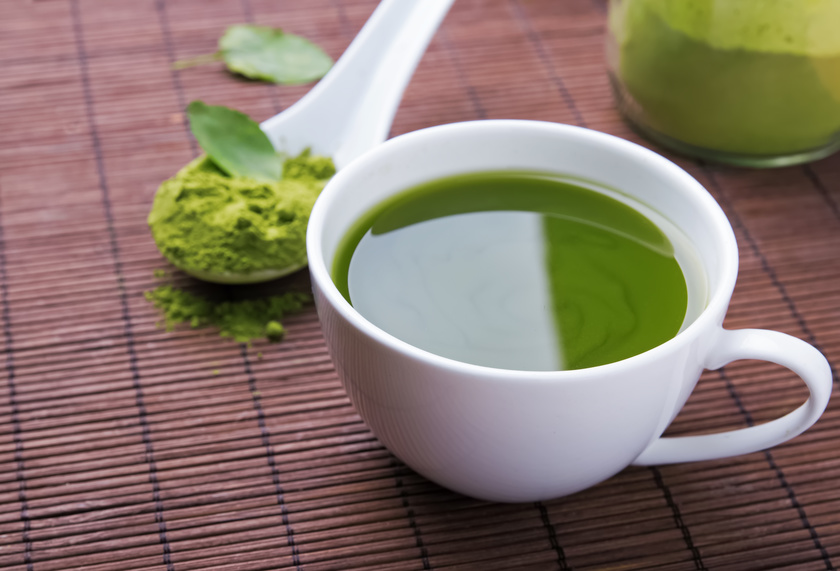
Fights Diabetes
To clarify, diabetes occurs when there is a deficit of insulin in the blood.
Insulin is a hormone that converts sugar into the energy.
People who do not suffer from diabetes produce insulin naturally.
However, if the person’s body is not capable of producing this vital hormone on its own, it triggers diabetes.
In the case of diabetes patients, they should consume green tea for it prevents type 1 diabetes from progressing, improves insulin sensitivity, and reduces blood sugar levels (42).
Type 2 diabetes is one of the most common illnesses, which now afflicts about 300 million people worldwide.
According to a study conducted on Japanese individuals, drinking green tea lowers the risk of developing type 2 diabetes for 42% (43).
Green tea drinkers had a reduced risk of becoming type 2 diabetic for 18% (44).
Dr. Joseph Mercola, a renowned New York Time writer, claims that poor diet and lack of activity triggers diabetes among anything else.
By adjusting our lifestyle, we are putting a stop to illnesses and their potential development.
As Dr. Mercola said, a balanced diet is an effective way of preventing many illnesses, so drinking green tea causes many benefits as well as preventing diabetes.
Keeps Liver Healthy
As we have already stated, green tea has got strong anti-inflammatory properties and nutrients.
Catechin, an active ingredient of green tea, has an ability to protect our organs from dangerous toxic substances.
The inflammation of liver, viral hepatitis, can be treated with green tea.
Those suffering from this disease have a fatty liver, and green tea is considered to be a common beverage for attaining a lean liver.
A study conducted at the University of Connecticut investigated what effects green tea had on NAFLD (non-alcoholic fatty liver disease).
Obese mice were given green tea extract for six weeks.
The results were as follows: green tea prevents the accumulation of fat and the decline in antioxidant defenses in the liver and improves liver function.
Nevertheless, the study is still investigating whether green tea affects fat absorption and blocks fat synthesis in the liver.
It is beyond question that this wonderful beverage is beneficial for our liver, but drinking too much of it may cause liver damage; therefore, it should be treated as a supplement, not medication.
Improves Memory and Prevents Dementia
There is no doubt green tea can improve brain function on a short-term basis.
There have been both claims and studies conducted in favor of green tea’s ability to protect the brain in aging adults.
The two most common diseases neurodegenerative diseases are Alzheimer’s and Parkinson’s disease.
First, Dementia is frequently caused by Alzheimer’s diseases because it causes neurodegenerative deterioration of the human brain.
Parkinson’s disease causes the death of dopamine responsible for producing neurons in the brain.
Catechin, an active ingredient of green tea, has proved to be effective in protecting neurons from degeneration, thus potentially lowering the risk of Alzheimer’s and Parkinson’s (45, 46, 47).
Some other active ingredients of green tea have been said to bring positive effect on a neural system, the improvement in our ability to perform basic memory tasks simultaneously, and stimulating our mental health.
Increases Bowel Movements and Fights Colon Diseases
Green tea, like many other types of tea, is a great laxative.
The main reason for its laxative properties is the caffeine found in green tea.
This mild laxative stimulates the bowels to move, activating and contracting your colon to push things forward.
This stimulation of the colon is called a gastrocolic reflex, being most intense in the morning after eating for the first time in a given day.
That said, drinking green tea in the morning will stimulate your bowels.
It goes without saying that green tea is good for colon health.
Anti-inflammatory properties are a good ally for fighting Inflammatory Bowel Disease (IBD).
Namely, what is harmful to our colon health is Mucoid plaques that form in the gastrointestinal tract.
If these plaques get hardened, they may cause many ailments including skin disorder, weak immune system, or irregular digestion.
Still, the antioxidants found in green tea help us to get rid of the toxins from the colon.
Catechin, the most known antioxidant in green tea assists in kidney and liver function.
Sometimes, you may feel jitters in your stomach after drinking green tea, but no worries.
It is just the toxins and waste leaving your body.
Keeps Allergies at Bay
We have seen that green tea is a great anti-inflammatory substance.
But apart from this health benefit, it also acts as an anti-allergen.
The natural component found in green tea called epigallocatechin gallate (EGCG) is a powerful antioxidant.
According to a research, EGCG binds to the lipid membrane, thus preventing the progression and growth of various human pathogens including herpes, A and C virus, hepatitis B, Candida albicans yeast and adenovirus Staphylococcus aureus bacteria (48).
Likewise, EGCG can block IgE (a receptor responsible for allergic reactions) in an effective way.
You will no longer be susceptible to allergies of any kind.
Yet another study published in the “Cytotechnology” found that green tea reduces pollen allergies due to polyphenol (49).
Boosts Eyesight
Along with carrots, which have long been regarded as a food that boots eyesight, green tea has been found to be successful in producing antioxidant activities that penetrate the eye tissues.
Once again, it is Catechin that has the ability to be absorbed into the tissues of the eye.
In a study published in the journal Experimental Eye Research, green tea prevents blindness induced by cataracts (50).
The experiment conducted on lab rats found that the highest concentration of Catechin was found in the retina of the rats who were fed green tea extract.
On the contrary, the cornea was the area with the least absorption of the antioxidant.
Furthermore, not only can green tea boost your eyesight, but it can also protect your eyes from various common eye diseases including glaucoma.
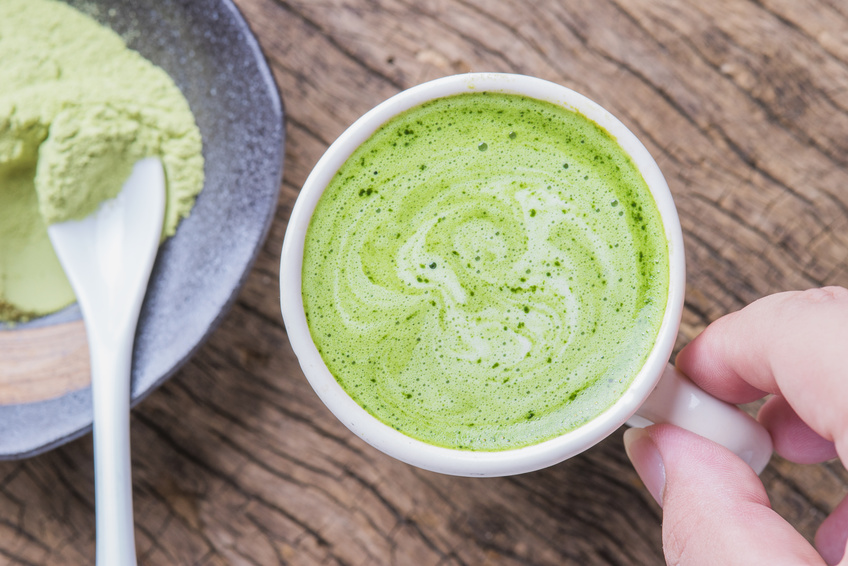
Protects from HIV
HIV has become a serious and widespread disease for which there is no cure yet.
However, it may be either prevented or treated to a certain degree.
For this reason, drinking Matcha green tea may be efficient in the prevention of HIV, especially if we take into account that this tea has EGCG.
This flavonoid has been linked to fighting HIV in a natural way.
Why it is superior to the commercial ways of fighting HIV such as anti-retroviral drugs is because it has the power to penetrate through the blood brain barriers, causing the immune system boosting.
Has UV Protection Properties
According to the studies, green tea can make your skin more resistant to UV rays, thus preventing premature skin aging.
Catechin, a strong antioxidant, protects the skin tissue from the harmful UV rays.
Drinking green tea on a regular basis will cause reduces skin redness because it makes your skin resistant to the harmful sun exposure.
A research published in “British Journal of Nutrition” investigated that green tea reduces the damage caused by UV radiation, given that you consume this beverage on a regular basis along with vitamin C (51).
Builds a Stronger Bone Structure
Green tea can also play a big part in rejuvenating and building a stronger bone structure.
In cases of a lack of vitamin D or calcium, brittle bones, or osteoporosis, is an expected outcome.
According to Dr. Joseph Mercola and his research on boosting a bone structure and improving strength, green tea has proved to fight osteoporosis successfully.
Namely, polyphenols, a substance found in green tea, combined with alfacalcidol, is capable of reversing bone damage which was caused by a chronic inflammation (53).
Green tea can also stimulate mineralization of the bones and removing bone tissue.
Dosing, Side Effects, and Precautions
Like everything, nutrition is an individual thing.
It depends on the organism of a person.
Therefore, dosing is an individualistic aspect.
However, on the average, a dosage of 2 cups per day is recommended.
Everything over that might be harmful to your health.
Also, nutrition is a complex matter, and everything within this matter has its pros and cons.
When it comes to Matcha, it depends on the concentration of the powder.
Ingesting the powder means ingesting the leaf.
That includes everything found on the leaf, for example, bacteria.
The soil naturally possesses contaminants such as fluoride, pesticides, and heavy metals.
As a result of the soil conditions, Matcha is exposed to various contaminants (54, 55, 56, 57).
Even if someone is growing organic Matcha, it may reduce the rates of exposure to contaminants, but there will also be risks of harmful substances in large amounts.
Even though this plant is extremely healthy, its abundance of healthy nutrients does not necessarily mean it is helpful.
The human body has also the threshold for healthy nutrients like antioxidants.
Depending on that individual threshold, you may experience negative side effects of Matcha such as nausea, diarrhea, kidney or liver toxicity (58, 59, 60).
Studies have shown that liver toxicity is likely to happen to those consuming 6 cups of green tea on a daily basis for 5 months.
This is also the case with Matcha, but here it only took 2 cups on a daily basis to cause the symptoms of liver toxicity.
Conclusion
Dating to the distant times and used by Zen masters, it goes without saying that Matcha is a powerful, healthful and useful plant.
Coming from the same plant like regular green tea, it has more benefits compared to its family “relative”.
This is because the actual leaves are ground and powdered, thereby ingested.
This is why it takes extra effort and time to prepare it.
Besides its many benefits, there might be some negative side effects.
However, they can be avoided if a dosage is adequate.
FDA Compliance
The information on this website has not been evaluated by the Food & Drug Administration or any other medical body. We do not aim to diagnose, treat, cure or prevent any illness or disease. Information is shared for educational purposes only. You must consult your doctor before acting on any content on this website, especially if you are pregnant, nursing, taking medication, or have a medical condition.
HOW WOULD YOU RATE THIS ARTICLE?
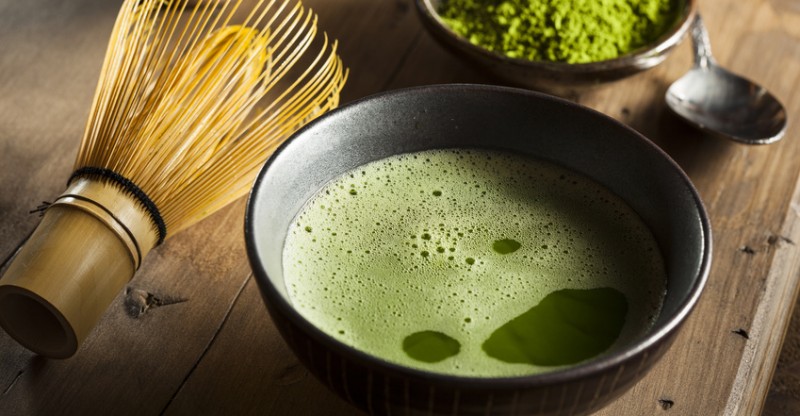






I had my first Matcha smoothie. Pounding headache for three hours, slept like a log and woke up feeling exhausted but with super clear skin. Bye-bye acne…
Hi Zayaan,
You have to be careful with dosing. Matcha has a lot of caffeine, so when you drink it, make sure you don’t do it on empty stomach. If you’ll still experience issues, try cutting down amount of matcha you use in your recipes.
Helen
Helpful article indeed! Pros and cons all mentioned!
I was making green tea baked donuts!It’s yammy!
Do all the bakings with matcha have the same benefits as tea?
They sound great! I might have to try making them too! 🙂
Good Matcha is stone ground in to a powder (slowly) as heat destroys some of the antioxidants and other goodies.
That is why they recommend to let your kettle cool to 70’C before making your Matcha.
Baking will definitely reduce some of the benefits, so less bang for your buck, but something is always better than nothing.
That is why they recommend buy the good stuff (ceremonial grade) for your tea and buy the food grade matcha for baking as it is lower quality with less goodness in it anyways, so you can still make stuff look cool and green or taste of matcha without it costing the earth and squandering all the benefits.